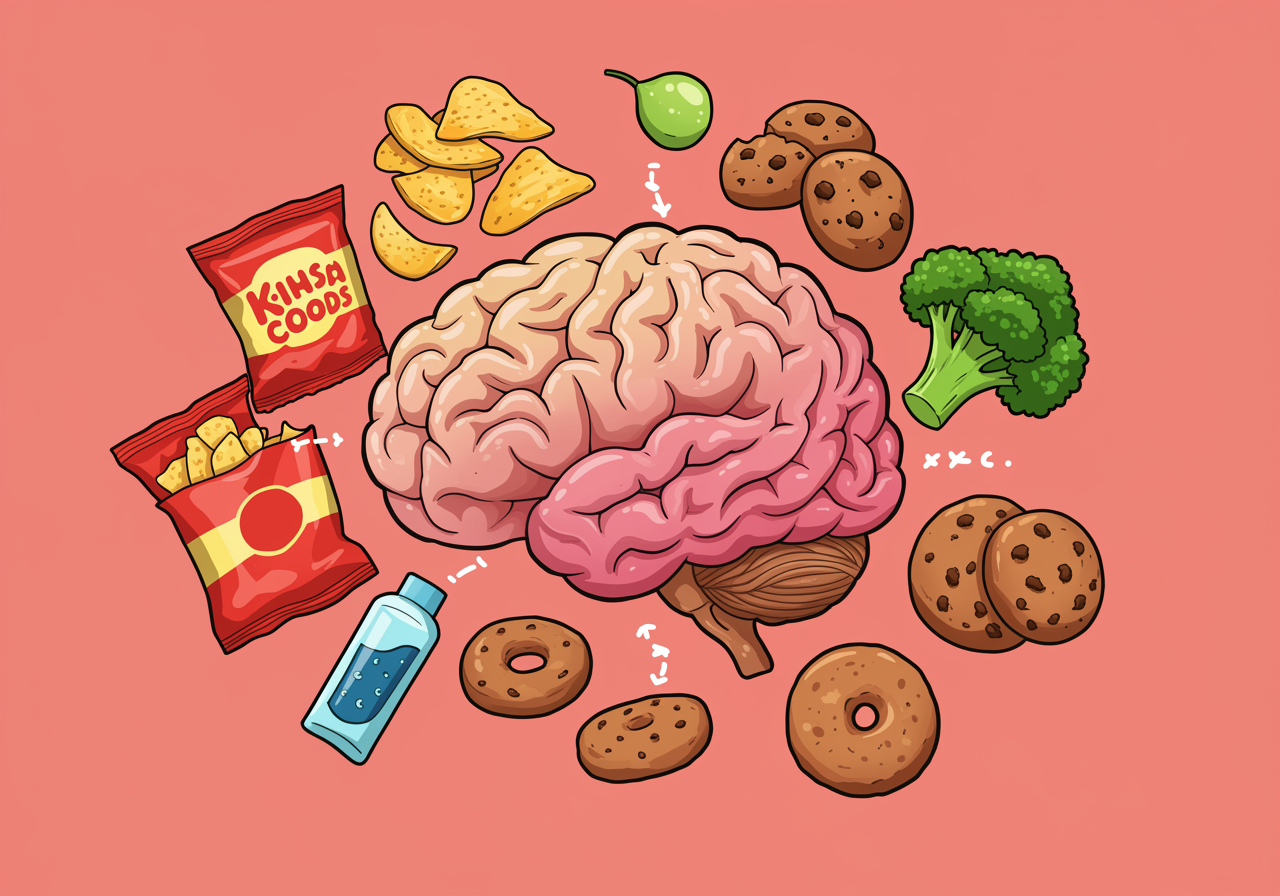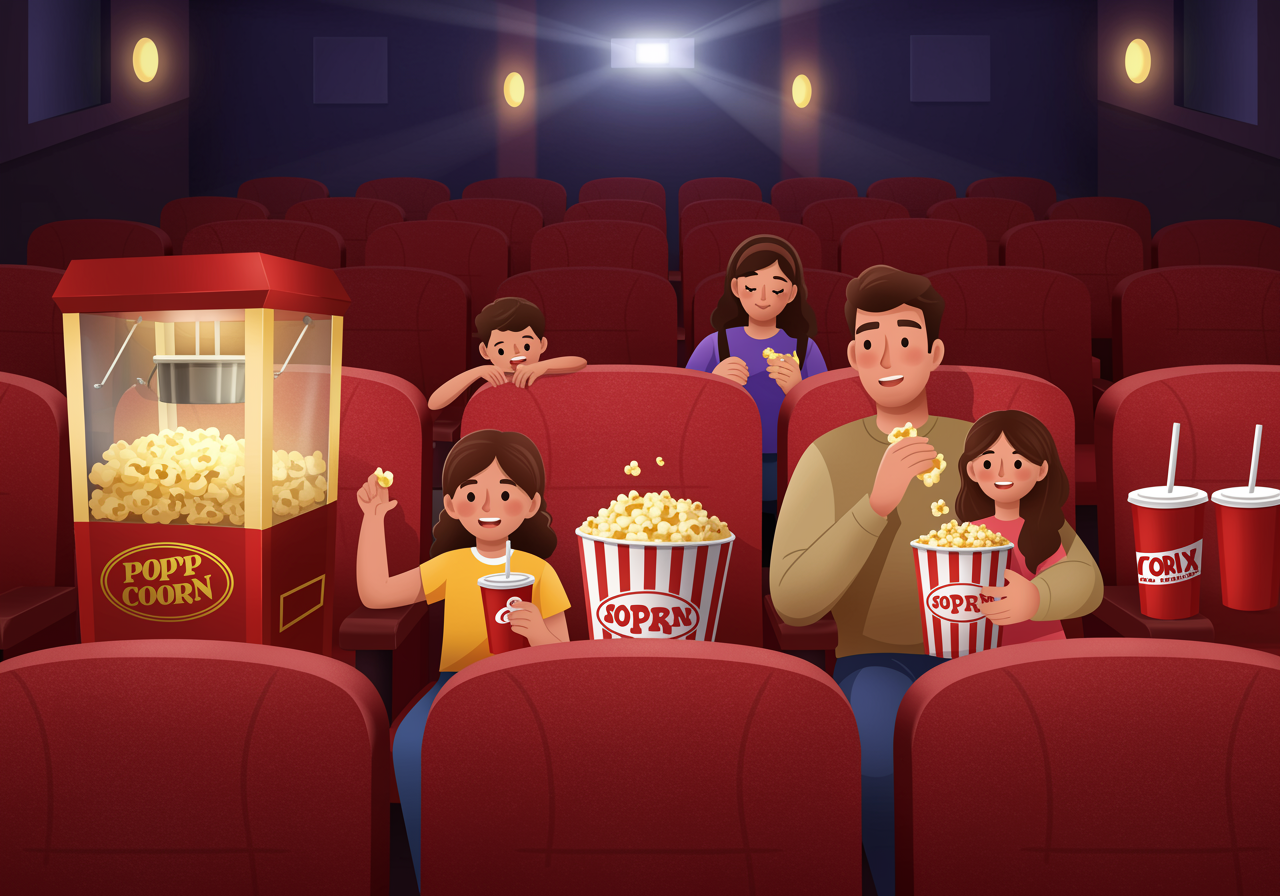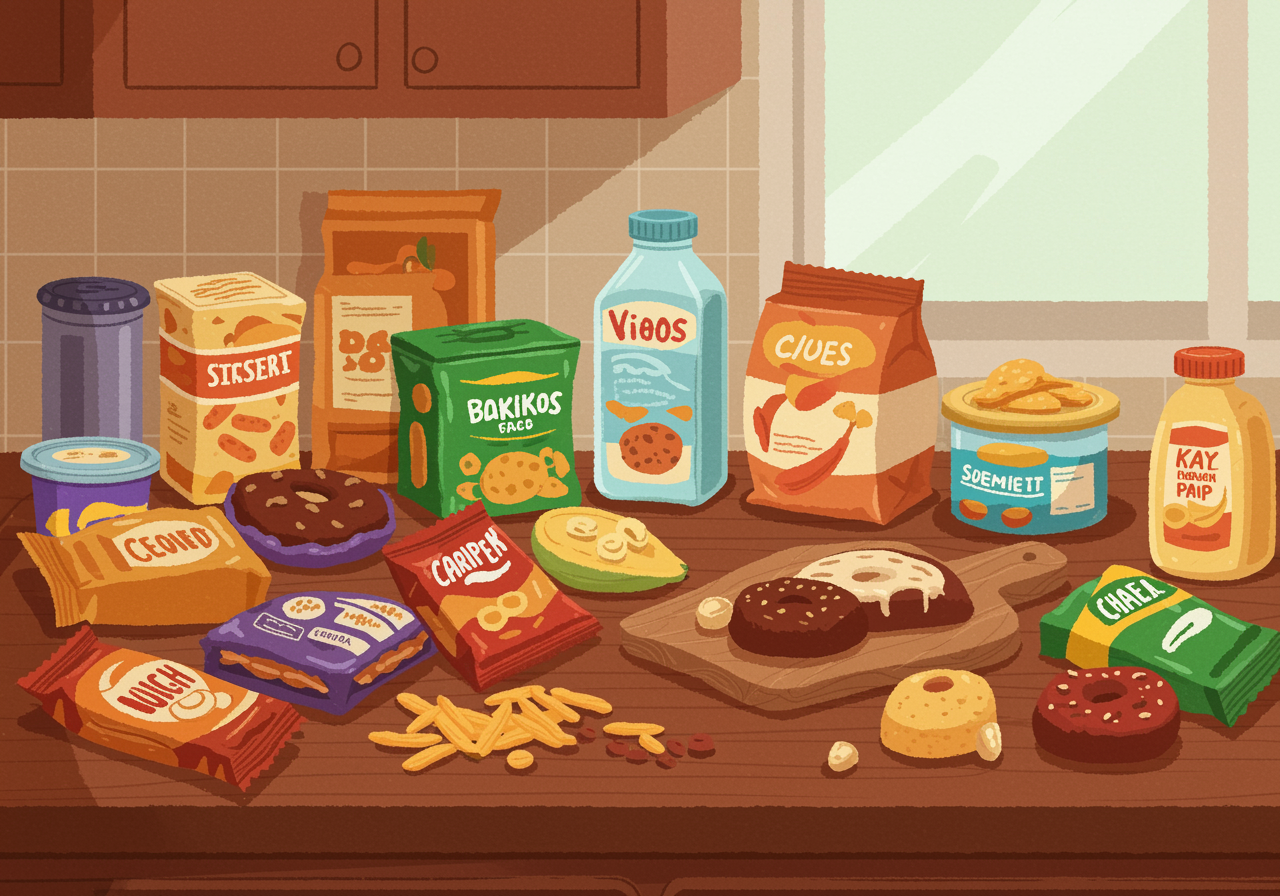Why Can’t I Stop Eating This? The Science Behind Food Cravings

Discover why your brain goes wild for certain snacks and how food companies use science to hook you
Ever wonder why you can demolish a whole bag of chips but struggle to finish your vegetables? Let’s crack the code on food cravings together!
Overview
Think about the last time you opened a bag of chips 'just for a few' and suddenly found yourself staring at an empty bag. Sound familiar? Understanding why certain foods trigger intense cravings isn't just interesting science—it's practical knowledge that helps kids make informed choices about what they eat. When we learn how sugar, salt, and fat affect our brains, we can better understand our own eating habits and recognize when food companies are using psychology to influence our choices.

Understand in 30 Seconds
Get up to speed quickly
- Your Brain on Sugar: When you eat sugar, your brain releases dopamine—the same 'feel good' chemical released when you win a game or get a hug. This creates a loop where your brain wants more of that good feeling.
- The Perfect Storm Combo: Foods that combine sugar, salt, and fat (like pizza or cookies) hit multiple pleasure centers in your brain at once. It's like pressing several 'happy buttons' simultaneously.
- Marketing Meets Science: Food companies hire scientists to create the perfect 'bliss point'—the exact combination of flavors that makes you want to keep eating. It's not about willpower; it's about brain chemistry.
- Processed vs. Natural: Whole foods like apples contain natural sugars plus fiber and water, which help you feel full. Processed foods strip away these natural 'stop signals,' making it easier to overeat.
Real Life Scenario
Situations you can relate to
Imagine walking into a movie theater and immediately smelling buttery popcorn. Your mouth starts watering before you even see the snack counter! This isn't just hunger—it's your brain remembering the salty, fatty pleasure of movie popcorn and triggering a craving. The theater knows this too, which is why they pump that smell throughout the lobby. Now think about opening a bag of your favorite chips. Have you ever noticed how the first few chips taste amazing, but after eating half the bag, you keep going even though they don't taste as good anymore? That's because your brain's pleasure response gets weaker with each bite, but the habit loop keeps you reaching for more. It's like your brain is saying 'maybe the next chip will give me that first-bite feeling again!'

Role Play
Spark a conversation with “what if” scenarios
What if you were a food scientist tasked with creating the most irresistible snack ever?
- Role play: Take turns being the scientist and the test subject. The 'scientist' describes their perfect combination of sweet, salty, and crunchy, while the 'test subject' acts out their brain's response to each ingredient.
What if you could interview your brain while eating your favorite junk food?
- Role play: One person plays the brain and explains what chemicals are being released and why, while the other person asks questions like 'Why do I want more even though I'm full?'
What if you were a detective investigating why some foods are harder to stop eating than others?
- Role play: Examine different foods in your kitchen together, looking for clues like ingredient lists, textures, and flavors. Create a 'case file' for the most addictive snacks you find.
FAQs
Frequently asked questions people want to know
Is food addiction real or just lack of willpower?
Food addiction is real! Brain scans show that highly processed foods trigger the same reward pathways as addictive drugs. It's not about being weak—it's about understanding how your brain responds to certain ingredients.
Why don't I crave broccoli the same way I crave cookies?
Broccoli doesn't hit the 'bliss point' combination of sugar, salt, and fat that triggers intense pleasure signals in your brain. Plus, it has fiber and water that help you feel satisfied with smaller amounts.
Can I train my brain to crave healthier foods?
Yes! Your taste buds and brain can adapt over time. When people gradually reduce processed foods and eat more whole foods, they often find that overly sweet or salty foods start tasting too intense.
Examples in the Wild
See how this works day to day
- Scientists at Yale University found that foods combining fat and carbohydrates (like pizza or donuts) activate brain reward circuits more than foods with just fat or just carbs alone. (Yale University School of Medicine, 2018)
- A study showed that ultra-processed foods make up about 60% of calories in the average American diet, and people eating these foods consumed 500 more calories per day than those eating whole foods. (National Institutes of Health, 2019)
- Food companies spend over $1.8 billion annually on marketing to children, with most ads promoting sugary cereals, fast food, and snacks high in salt, sugar, and fat. (Federal Trade Commission Report, 2021)
- Brain imaging studies show that seeing pictures of high-calorie foods activates the same reward regions as drugs do in people with addiction, even when people aren't hungry. (American Journal of Clinical Nutrition, 2020)
In Summary
What you should know before you start
- Certain foods trigger powerful chemical responses in our brains, especially those combining sugar, salt, and fat
- Food companies use scientific research to create products that activate our brain's reward systems
- Understanding the science behind cravings helps us make more informed choices about what we eat
- It's not about perfect willpower—it's about recognizing how different foods affect our brains and bodies
Pro-tip for Parents
You got this!
If your teen feels guilty about food cravings, remind them this isn't about moral failure—it's about biology meeting billion-dollar marketing. Focus conversations on curiosity rather than judgment. Ask 'What do you notice about how different foods make you feel?' instead of 'You shouldn't eat that.' This approach builds awareness without shame and helps them become thoughtful consumers who understand the science behind their choices.

Keep an Eye Out For
Find these examples in everyday life
- News stories about new studies on food addiction or brain chemistry—these make great conversation starters
- Marketing tactics in grocery stores, like placing candy at checkout or using bright colors on kid-targeted products
- Your family's own eating patterns—notice together when cravings hit strongest and what triggers them
Explore Beyond
Look up these related research topics
- How does stress affect our food choices and cravings?
- What's the difference between hunger and appetite, and why does it matter?
- How do different cultures approach food and eating habits?